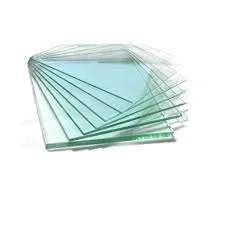Understanding Low Iron Glazing A Clear Choice for Modern Architecture
In the world of architecture and interior design, the materials we choose can significantly impact both aesthetics and functionality. One such material that has gained substantial popularity in recent years is low iron glazing. This innovative type of glass is known for its remarkable clarity and purity, making it a favored choice in various applications, from skyscrapers to residential homes. In this article, we will explore what low iron glazing is, its benefits, and its various applications.
What is Low Iron Glazing?
Low iron glazing is a type of glass that contains significantly less iron content compared to regular glass. The presence of iron in standard glass typically gives it a greenish tint, which can be undesirable in certain architectural applications. By reducing the iron content, low iron glass achieves a higher degree of transparency and purity, resembling the clarity of crystal. This glass is often used in large architectural panels, windows, and glass facades, where visual clarity is paramount.
The Benefits of Low Iron Glazing
1. Superior Clarity The primary benefit of low iron glazing is its exceptional clarity. It allows for unobstructed views and enhances the transparency of glass structures. This is particularly important in modern architecture, where natural light and scenic vistas are prioritized.
2. Enhanced Aesthetics The aesthetic appeal of low iron glazing is undeniable. It provides a sleek, contemporary look that is increasingly sought after in both commercial and residential designs. Whether used in a minimalist home or a striking high-rise, it elevates the overall visual impact.
3. Increased Light Transmission Low iron glass boasts higher light transmission compared to regular glass. This advantage not only contributes to a brighter indoor environment but also reduces the need for artificial lighting, promoting energy efficiency.
4. Temperature Control Many modern low iron glazing products come with advanced coatings that improve thermal insulation. These coatings can help regulate indoor temperatures by minimizing heat loss during colder months and reducing heat gain in the summer. As a result, they contribute to lower energy bills and a more comfortable living space.
low iron glazing
5. Versatility Low iron glazing can be used in various applications, including windows, glass walls, skylights, and curtain walls. Its versatility makes it a popular choice for architects and designers looking to create unique and innovative spaces.
Applications of Low Iron Glazing
Low iron glazing has a wide range of applications, reflecting its adaptability and aesthetic appeal. Here are some popular uses
- Skyscrapers and Commercial Buildings In the corporate world, low iron glazing is often utilized for glass facades, allowing stunning views of the skyline while maintaining energy efficiency. The transparency helps create an inviting atmosphere for both occupants and visitors.
- Residential Homes In high-end homes, low iron glass is frequently used in expansive windows and sliding doors. It creates seamless transitions between indoor and outdoor spaces, enhancing the overall living experience.
- Retail Spaces Storefronts benefit from low iron glazing due to its ability to attract customers with crystal-clear displays. Retailers use this glass to showcase products effectively, drawing attention and enhancing the shopping experience.
- Art Galleries and Museums The art world also embraces low iron glazing. Museums often use it for display cases and windows to ensure that artwork is seen in the best possible light, without any color distortion.
Conclusion
Low iron glazing represents a significant advancement in glass technology, offering unparalleled clarity and aesthetic appeal. Its benefits extend beyond mere looks; it enhances energy efficiency, provides thermal control, and supports modern architectural principles. As architects and designers continue to push the boundaries of creativity, low iron glazing will undoubtedly remain a key material in the pursuit of innovative and visually striking environments. Whether in a soaring skyscraper or an elegant home, low iron glazing embodies the fusion of form and function, holding the promise of a brighter, clearer future in architecture.
 Afrikaans
Afrikaans  Albanian
Albanian  Amharic
Amharic  Arabic
Arabic  Armenian
Armenian  Azerbaijani
Azerbaijani  Basque
Basque  Belarusian
Belarusian  Bengali
Bengali  Bosnian
Bosnian  Bulgarian
Bulgarian  Catalan
Catalan  Cebuano
Cebuano  Corsican
Corsican  Croatian
Croatian  Czech
Czech  Danish
Danish  Dutch
Dutch  English
English  Esperanto
Esperanto  Estonian
Estonian  Finnish
Finnish  French
French  Frisian
Frisian  Galician
Galician  Georgian
Georgian  German
German  Greek
Greek  Gujarati
Gujarati  Haitian Creole
Haitian Creole  hausa
hausa  hawaiian
hawaiian  Hebrew
Hebrew  Hindi
Hindi  Miao
Miao  Hungarian
Hungarian  Icelandic
Icelandic  igbo
igbo  Indonesian
Indonesian  irish
irish  Italian
Italian  Japanese
Japanese  Javanese
Javanese  Kannada
Kannada  kazakh
kazakh  Khmer
Khmer  Rwandese
Rwandese  Korean
Korean  Kurdish
Kurdish  Kyrgyz
Kyrgyz  Lao
Lao  Latin
Latin  Latvian
Latvian  Lithuanian
Lithuanian  Luxembourgish
Luxembourgish  Macedonian
Macedonian  Malgashi
Malgashi  Malay
Malay  Malayalam
Malayalam  Maltese
Maltese  Maori
Maori  Marathi
Marathi  Mongolian
Mongolian  Myanmar
Myanmar  Nepali
Nepali  Norwegian
Norwegian  Norwegian
Norwegian  Occitan
Occitan  Pashto
Pashto  Persian
Persian  Polish
Polish  Portuguese
Portuguese  Punjabi
Punjabi  Romanian
Romanian  Russian
Russian  Samoan
Samoan  Scottish Gaelic
Scottish Gaelic  Serbian
Serbian  Sesotho
Sesotho  Shona
Shona  Sindhi
Sindhi  Sinhala
Sinhala  Slovak
Slovak  Slovenian
Slovenian  Somali
Somali  Spanish
Spanish  Sundanese
Sundanese  Swahili
Swahili  Swedish
Swedish  Tagalog
Tagalog  Tajik
Tajik  Tamil
Tamil  Tatar
Tatar  Telugu
Telugu  Thai
Thai  Turkish
Turkish  Turkmen
Turkmen  Ukrainian
Ukrainian  Urdu
Urdu  Uighur
Uighur  Uzbek
Uzbek  Vietnamese
Vietnamese  Welsh
Welsh  Bantu
Bantu  Yiddish
Yiddish  Yoruba
Yoruba  Zulu
Zulu 

